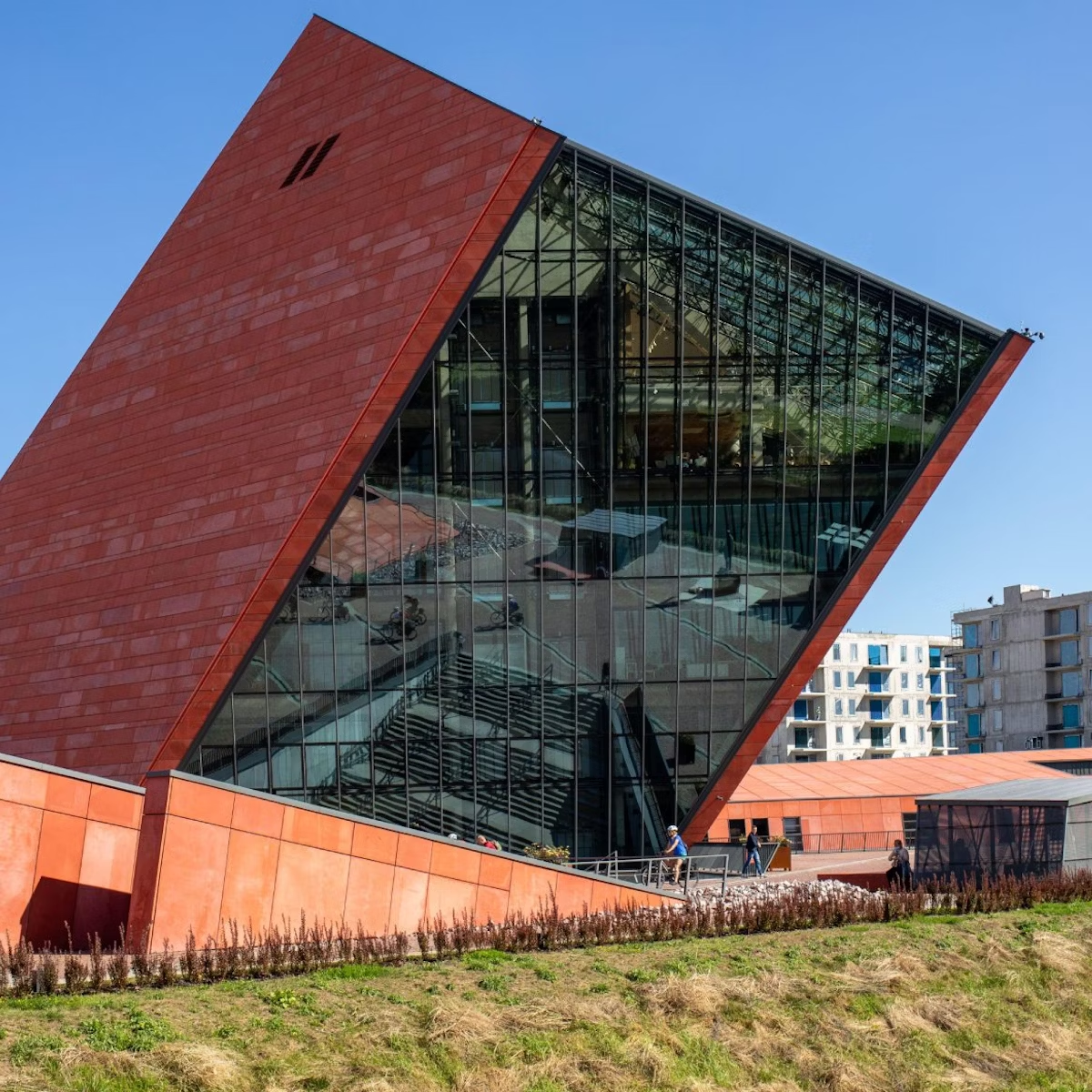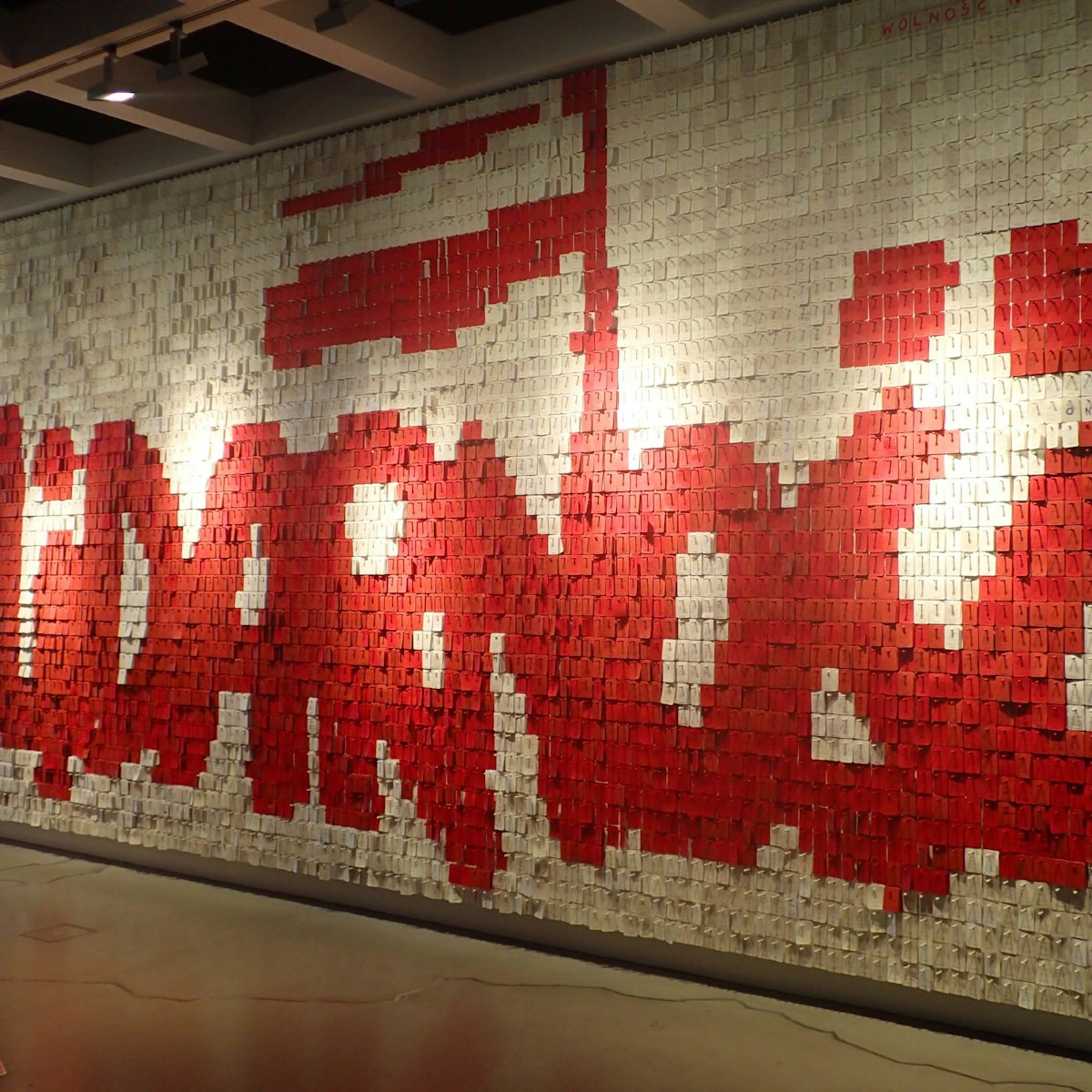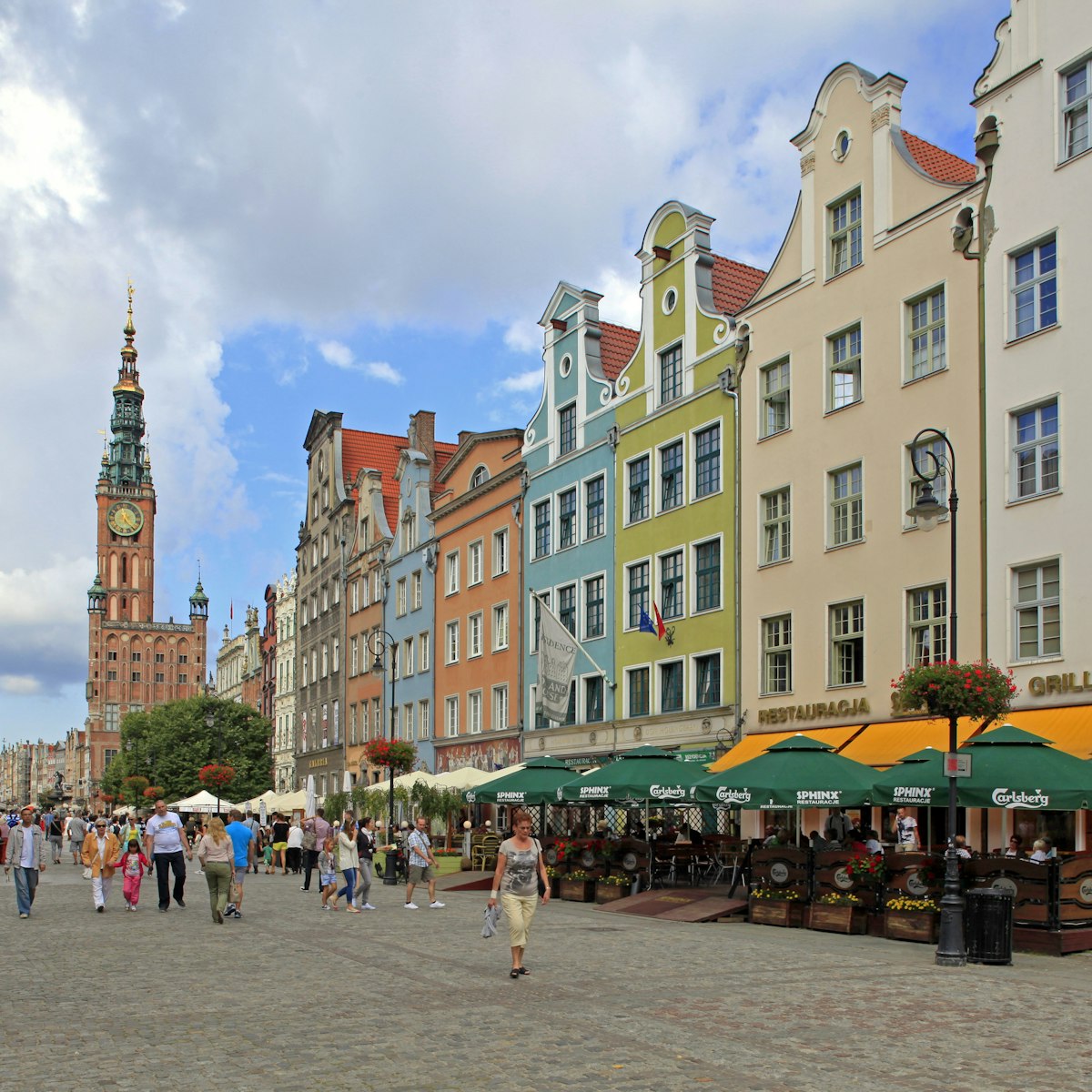With time to kill, walk south along the line of the river, past remnants of the old city walls, to this scrappy park behind Hotel Stary Malbork. It isn’t much to look at, but around its edge are commemorative stones placed by keen international speakers of Esperanto from as far away as Korea and Congo, in honour of the world language invented by Ludwig Zamenhof. Each one bears the name of a tree in Esperanto, the tree usually planted nearby.
There’s a monument to the great man in the middle of the park. The explanatory signage is in Polish…and Esperanto, naturally.







